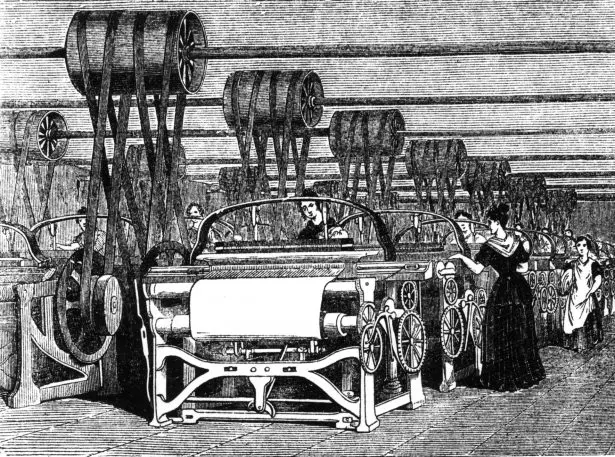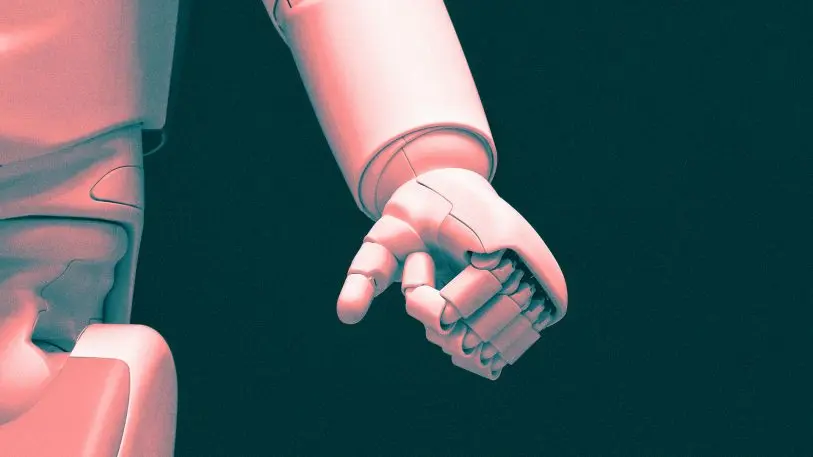A 2017 New Yorker cover by R Kikuo Johnson painted a dystopian scene. Robots pace and trundle past a homeless human kneeling at their feet, while one deigns to lower its gaze to flip a few coins in his cup. The image expressed perfectly the pervading, and misplaced, pessimism around the impacts of automation not just among East Coast sophisticates, but across the U.S. and the developed world. In fact, it is a view that has even infiltrated one of the last pockets of optimism about the future: the wide-eyed utopianism of Silicon Valley.

The most widely held fear, and one that taps into our earliest fears about industrialization, is of mass unemployment as robots take most of the jobs. Other critiques of the proliferation of artificial intelligence and increased automation are more nuanced. Some say that it will drive even greater inequality between the “cognitive elite” and the deskilled masses. The Guardian reflected a widespread concern over the potential concentration of power by the robot-owning corporations: “If you think inequality is a problem now, imagine a world where the rich can get richer all by themselves.”
These concerns lie behind growing calls for Universal Basic Income, robot taxes, and the break-up of Big Tech giants like Google and Amazon. But the situation isn’t as grim as we might think. Automation need not be stirred into a doom-laden soup along with Trump and climate change. In fact, if we step back from the narrow focus on technology and take a wider historical, economic, and humanist view, the picture is far from bleak. Counterintuitive as it may seem, automation can play a key role in creating more and better jobs, and rising prosperity. There are broadly three reasons to be cheerful about the march of the robots.

Automation drives growth
Since the Industrial Revolution, the automation of human labor has run hand-in-hand with productivity gains, economic growth, and an increase in the number of jobs and prosperity. It is productivity growth that largely accounts for why most of us are six times better off than our great-grandparents. As Paul Krugman put it, in economics, “Productivity isn’t everything–but in the long run, it’s almost everything.” How can automating work create more jobs?
A classic example of how this process can work is that, during the Industrial Revolution, 98% of the manual labor involved in weaving cloth was mechanized. But, despite the concerns of the Luddites, the number of textile workers in the U.K. exploded. As costs plummeted, demand grew, and so did the size of the industry–and therefore job numbers. The cake got bigger. The jobs also changed from hand weaving to operating the weaving machines. A more recent example is the impact of Electronic Discovery Software (EDS) on junior lawyers and paralegals, who traditionally spent the bulk of their time sifting through piles of documents. EDS was first applied in the 1990s, and did the job more quickly and more accurately than humans. Yet paralegal and junior lawyer jobs have grown quicker than the rest of the workforce since 2000.
How so? As searching became cheaper and quicker, law firms searched more documents, and judges allowed more expansive discovery requests. Economists have a name for the intuitive, but mistaken, idea that there is a certain amount of work to do in an economy, and if productivity increases there will be fewer jobs to go around–the Lump of labor fallacy. There are, of course, occupations that fared less well in the face of technology, such as typesetters, once graphic designers adopted desktop-publishing software in the 1990s. But the general pattern is that machines take over mundane tasks, and humans move on to do more sophisticated–and often meaningful–work that machines can’t do yet.
And the net effect in a buoyant economy is job growth. A long view reveals that each round of automation brings similar fears–when the first printed books with illustrations began to appear in the 1470s, wood engravers in the German city of Augsburg protested and stopped the presses. In fact, their skills turned out to be in higher demand than before, as more books needed illustrating.
Automation makes work more rewarding
The general assumption is that if the robot doesn’t replace you, it will deskill you. Yet a study by the Boston University School of Law into the impact of automation on 270 occupations in the U.S. since 1950 found that only one was eliminated: lift operators.
The other jobs were partially automated and in many cases, this automation led to more jobs, often more skilled positions. The impact of ATMs on bank clerks is a case in point. The number of branch employees has grown since cash machines were first installed: ATMs allowed banks to operate branches at lower cost, enabling them to open many more. At the same time, banks morphed into financial-service providers, giving clerks more opportunity for upward job mobility. Machines generally take on the simple tasks, as humans move to more complex–and often more meaningful–work.

Overestimation of machines, underrating humans
In 1979, Fiat ran a television ad in the U.K. for the Strada with the tagline, “Handbuilt by robots.” In the 1980s, the march of the robots was seen as inevitable and, as with the assembly line, car production would lead the way. Forty years later, Toyota, the guru of manufacturing innovation, has robots doing less than 8% of the work on the factory floor–a ratio that hasn’t changed in 15 years. When asked why, the president of Toyota Motor Manufacturing, Kentucky, replied that “machines are good for repetitive things, but they can’t improve their own efficiency or the quality of their work. Only people can.”
Even in manufacturing, automation isn’t as easy as many assume. Pessimists tend to overestimate the extent to which humans can be replaced and how fast it will happen. They share a faulty assumption with artificial-intelligence optimists, who look forward to “singularity,” when computer intelligence will supposedly surpass our own. They see impressive breakthroughs in narrow and bounded machine-learning problems, like beating humans at board games, and extrapolate that this singularity is inevitable and around the corner.
This assumption runs far ahead of current knowledge. Neuroscientists are only scratching the surface of understanding how our brains perceive, learn, and understand, while human consciousness is still a highly contested topic in both philosophy and psychology. We’re a long way from understanding human intelligence, never mind surpassing it. Gloom merchants tend to imbue technology with superpowers while running down human ingenuity. Surely our perception, curiosity, creativity, critical thinking, judgment, and adaptability will drive the world forward–aided by more automation.
We shape technology and, of course, it shapes us, but it does not define our future. Social and political forces are pivotal. The fatalism around robot-driven inequality suffers from peering at the future through technology blinkers. If robots drive inequality, how is it that Sweden has three times as many robots as the U.K. as a proportion of manufacturing workers–and much lower levels of inequality? Many other factors feed into the U.K.’s relatively high levels of inequality, such as low investment in education and in research and development, an overreliance on cheap labor, and an erosion of union power.
It is no coincidence that inequality in the U.K. soared between 1979 and 1990, during Margaret Thatcher’s assault on the unions. Fretting about robot-induced impoverishment tomorrow obscures the real policy-related causes of wage suppression today. With living standards stagnating across the developed world, boosting productivity growth should be a pressing priority. Far from running scared of it, we should be ramping up our investment in automation.
Of course, the road to semi-automated economic renewal will not be pain-free–many jobs will be lost in parts of the economy, while others will be created elsewhere.
But even more will be lost if the economy continues to ossify. This is where the state has a key role to play in devising and implementing an industrial renaissance strategy to navigate the disruption caused by the next wave of automation. This should include investing in R&D in job-creating sectors such as autonomous transportation, virtual and augmented reality, and data security, as well as introducing automation to the backward construction industry as part of a desperately needed expansion in housebuilding. There is, after all, no shortage of problems to solve and work to be done, including in human-intensive sectors that desperately need revitalization, such as healthcare and infrastructure.
An ambitious program to support and retrain workers for the parts of the economy that will grow as a result of automation is also needed. In short, timidity, not technology, is the problem. We have nothing to fear, but the fear of robots itself.
Kevin McCullagh is founder of the London-based consultancy Plan.
Recognize your brand’s excellence by applying to this year’s Brands That Matter Awards before the early-rate deadline, May 3.
